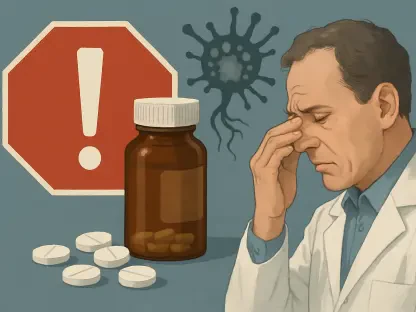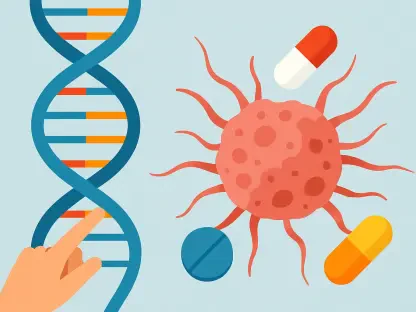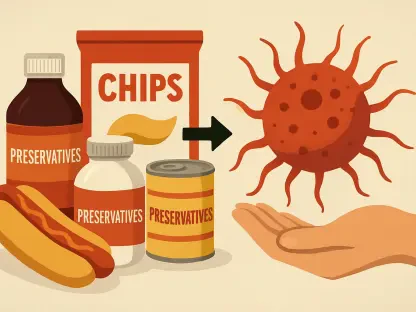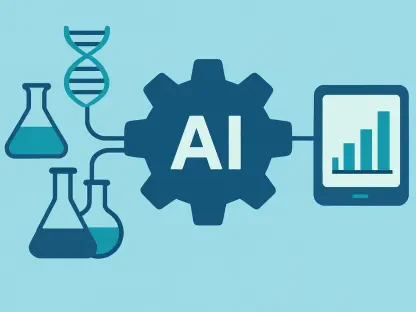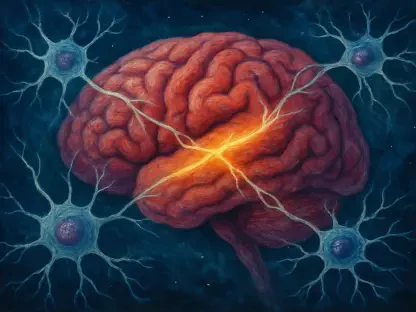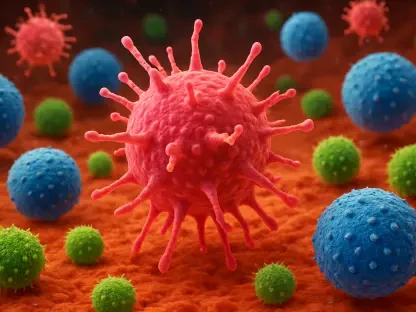Ivan Kairatov is a highly respected biopharma expert who has made significant contributions to the understanding and innovation in cancer research. With a focus on neuroblastoma, a particularly aggressive childhood cancer, his work is paving the way for new treatment strategies. In this interview, Ivan shares insights into his groundbreaking research and the potential for transforming current therapeutic approaches.
Can you explain what neuroblastoma is and why it is particularly aggressive in children?
Neuroblastoma is a cancer that arises from immature nerve cells and primarily affects children. What makes it particularly aggressive is its tendency to spread throughout the body before it’s diagnosed. The tumor often originates in the adrenal glands but can occur anywhere along the sympathetic nervous system chain. Children with metastatic disease have a poor prognosis because the cancer cells rapidly adapt and become resistant to conventional treatments.
What are the common treatment options currently available for neuroblastoma?
Currently, the treatment for neuroblastoma includes a combination of surgery, radiation therapy, chemotherapy, and immunotherapy. For high-risk cases, therapies are often intensive and can lead to significant long-term side effects. Despite these aggressive approaches, resistance and relapse remain substantial hurdles.
How does differentiation therapy work, and why doesn’t it always help neuroblastoma patients?
Differentiation therapy aims to convert immature cancer cells into mature cells that behave normally. Retinoic acid is commonly used for this purpose in neuroblastoma. However, not all patients respond to this therapy, and resistance can develop in approximately half of the cases, making it ineffective for long-term management of the disease.
What was the primary focus of your research in addressing neuroblastoma?
My research centered on identifying alternative mechanisms to initiate differentiation in neuroblastoma cells. We specifically looked at whether inhibiting certain antioxidant enzymes could prompt cancer cells to mature into healthy nerve cells, thus impairing tumor growth.
Can you describe the roles of the enzymes PRDX6 and GSTP1 in neuroblastoma?
PRDX6 and GSTP1 are antioxidant enzymes that help neuroblastoma cells manage oxidative stress, which is a byproduct of their high metabolic activity. Tumors are heavily reliant on these enzymes to survive; hence, they are associated with a worse prognosis due to their role in mitigating stress-induced cell death.
How did the inhibition of PRDX6 and GSTP1 lead to the conversion of cancer cells into healthy nerve cells?
By inhibiting PRDX6 and GSTP1, we disrupted the cancer cells’ ability to cope with oxidative stress, causing some cells to die and others to differentiate into neurons. This transformation reduces the tumor’s growth potential and could provide a new approach to treatment.
What makes this new treatment strategy different from the current retinoic acid differentiation therapy?
Our strategy targets specific enzymes crucial for tumor cell survival rather than attempting to force all cells to mature. This could mean fewer resistance issues and potentially lower toxicity, as we’re exploiting vulnerabilities specific to neuroblastoma’s survival mechanisms rather than applying a blanket treatment.
Did the research only show results in mice, or were there other models used?
Initially, our research was carried out using cell cultures and mouse models. These preliminary results are promising but will need to be corroborated in more complex models, and ultimately, clinical trials with children to ensure the findings are applicable and safe.
What steps remain before this treatment can be tested in human clinical trials?
The next steps include comprehensive safety evaluations and dosing studies in preclinical models. We will also need to demonstrate the pharmacological profile of these inhibitors to ensure they are suitable for human use. Once these hurdles are crossed, we can begin planning for early-phase clinical trials.
One of the enzyme inhibitors received orphan drug designation in the US—why is this significant?
This designation is significant because it accelerates the drug’s development process and may provide incentives, such as tax credits and market exclusivity, which are critical for bringing potential treatments for rare diseases to patients more swiftly.
Who funded your study, and how did their support contribute to your research?
Our study received funding from several organizations, including the Swedish Cancer Society and the Swedish Childhood Cancer Fund. This support was invaluable, offering the resources needed for in-depth research and collaboration, which were key in advancing our work.
How do you foresee this treatment impacting the long-term well-being of children with neuroblastoma?
If successful, this treatment may offer a less toxic alternative to current therapies, potentially improving survival rates while reducing long-term side effects. This could have profound implications for the quality of life of survivors, who currently face numerous developmental and cognitive challenges from existing treatments.
Are there any potential side effects of using these enzyme inhibitors that need to be addressed?
While the hope is for fewer side effects compared to traditional therapies, it is essential to thoroughly investigate possible adverse reactions in preclinical and clinical trials, especially since these drugs target fundamental cellular processes.
What are your next steps in this research to further validate your findings?
Our immediate goal is to refine the dosing regimen and confirm safety and efficacy in further preclinical studies. We are also seeking partnerships for early-phase trials and exploring other potential enzyme targets that could complement our current strategy.
Do you have any advice for our readers?
For those affected by neuroblastoma or other forms of cancer, staying informed about new research developments is crucial. Scientific discoveries are continually evolving, and what may seem like a small breakthrough today could lead to significant advancements in treatment options tomorrow.


